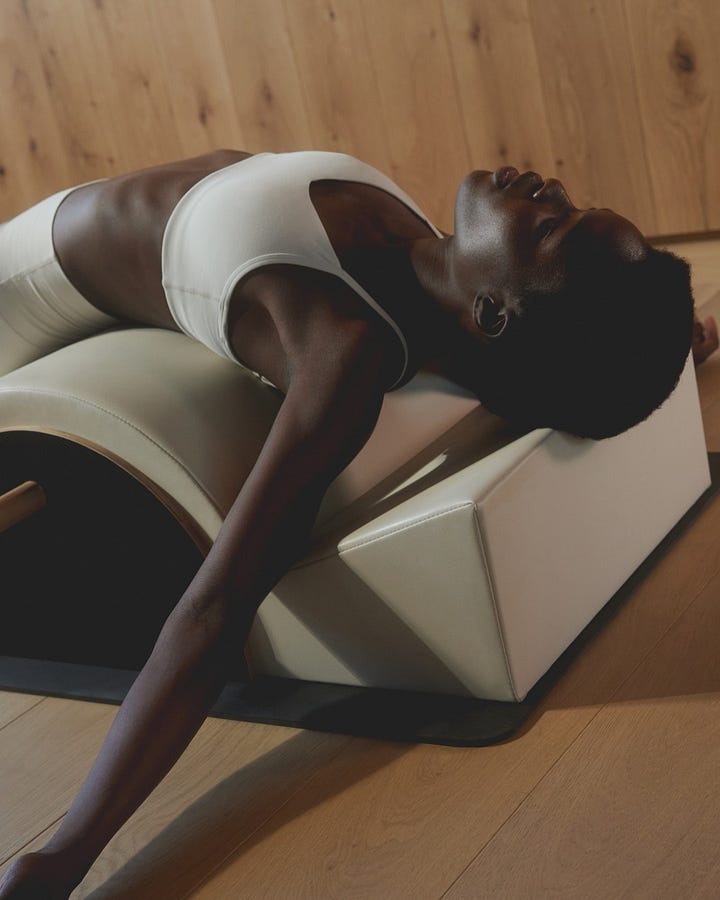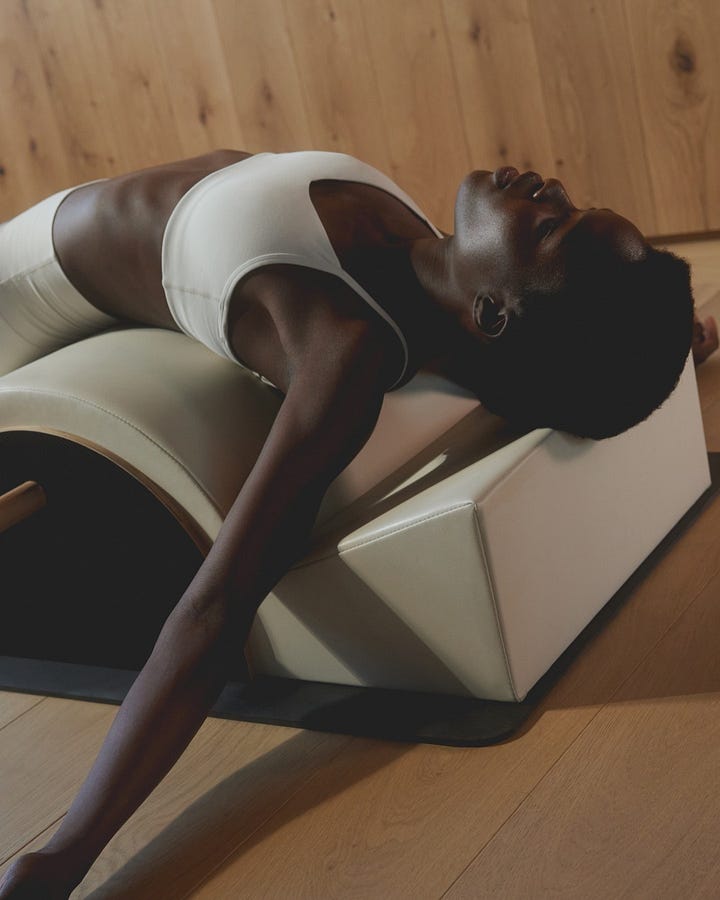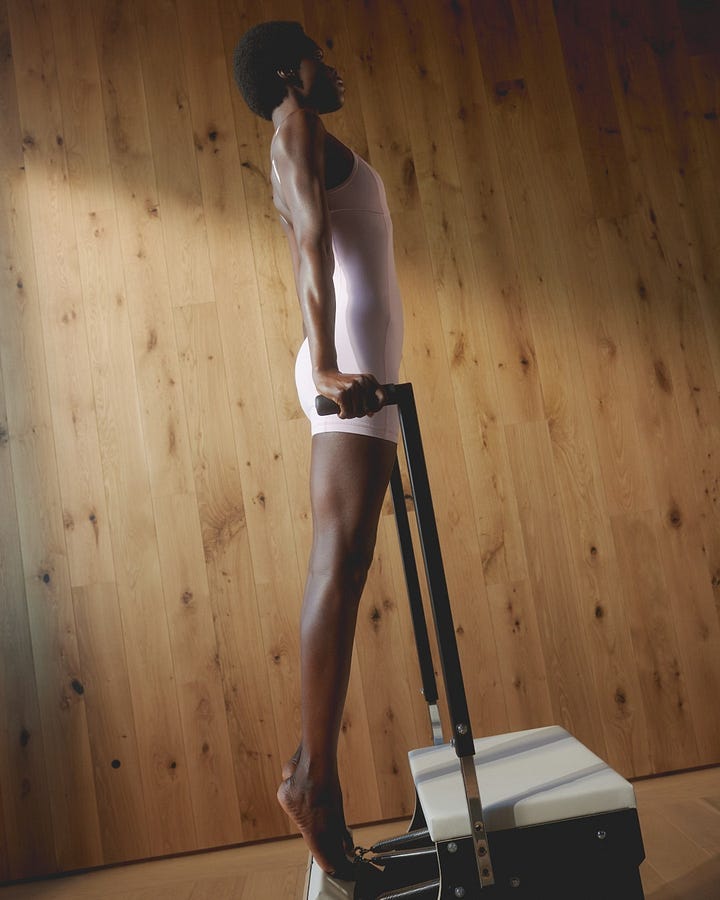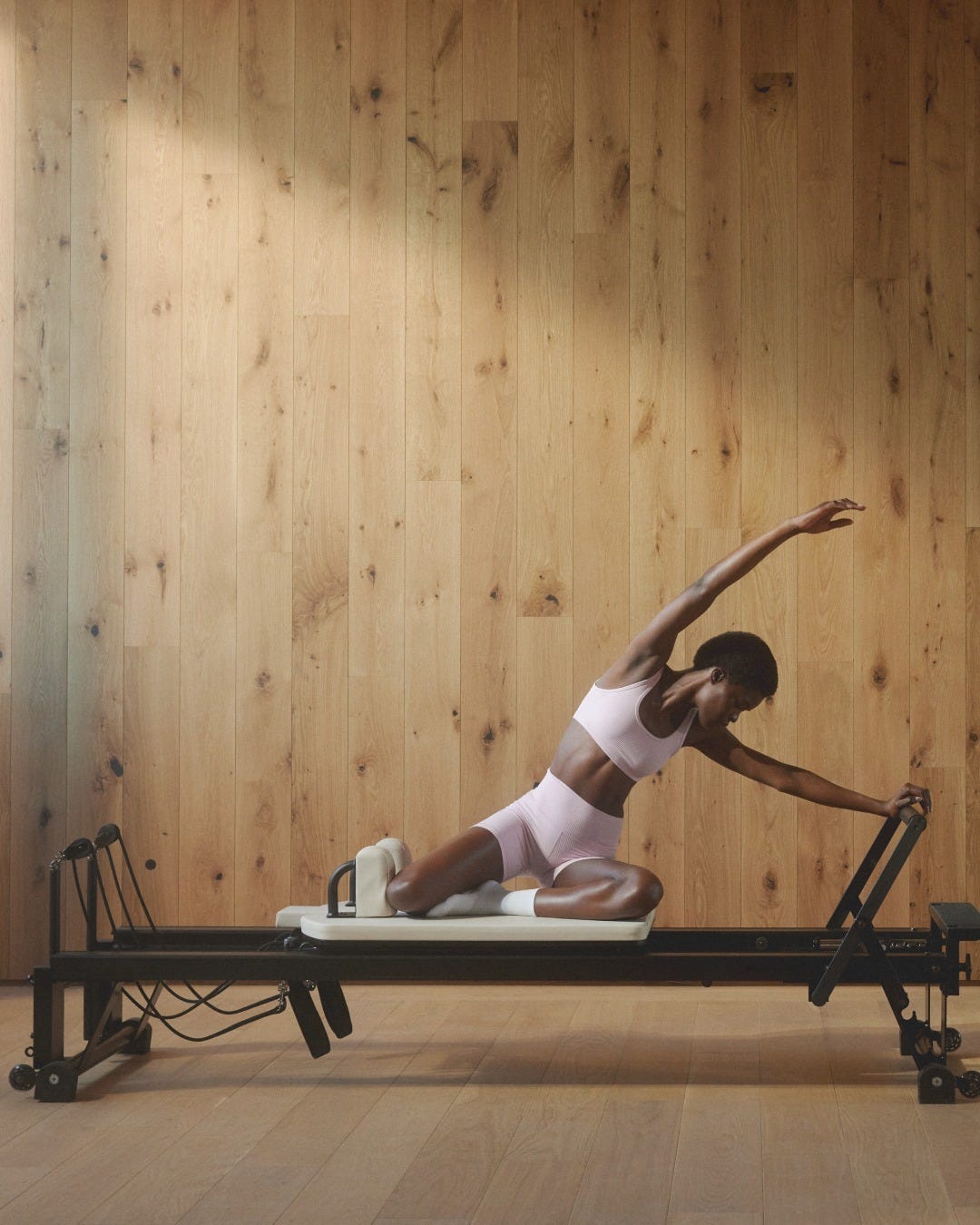Wellness That Works for Real Life (Even on a Busy Tuesday)
Not everything that looks like wellness feels like wellness. Here are 5 habits that truly help, and 5 that secretly make things worse.
Wellness is starting to feel like a competitive sport.
Cold plunges. Infrared sauna, monthly supplement hauls at Holland & Barrett. The pressure to join a running club even if you hate running. Morning routines that require an Excel sheet to keep track.
And somehow, you're still tired. Overstimulated.
There’s always something new you’re supposed to be doing:
ice baths for inflammation, protein tracking, lymphatic facial sculpting, “gut shots” before breakfast.
Wellness has become more about aesthetics than actual well-being.
You’re left investing more energy, money, and time without feeling any better.
At some point, you have to pause and ask: Is this actually helping me?
Because…Wellness isn’t about doing more.
It’s about doing what actually works for your body, your energy, your lifestyle.
The habits that regulate your mood. Strengthen your body. Protect your peace.
Not the ones that perform well on Instagram, but the ones that quietly support you offline.
So let’s cut through the noise and get back to the essentials.
Here’s what’s truly worth trying, and what you can skip (guilt-free).
What’s Worth Doing
1. Incline Walking: Simple Movement, Serious Results
Walking is one of the simplest, most underrated forms of exercise and when you add incline, it becomes a full-body, low-impact cardio burn that’s good for your legs, lungs, lymph system, and mental health.
Start with:
– 20–30 min sessions, 2–3x a week
– Gradually build up to 1.5–2 hours to hit your 10k steps in one go
Here’s my go-to formula:
– First 30 min: Incline 15, Speed 3.5 → targets glutes and hamstrings
– Then: Incline 10, Speed 4.6 → builds stamina and steps
Adjust based on your goal:
• Want to burn more calories or sculpt your legs? Increase the incline
• Want to hit your step count? Lower incline, raise the speed
Bonus habit stack:
Watch your favorite show or listen to a podcast while walking, it turns your cardio into self-care.
2. Strength Training: Build Muscle Without the Intimidation
Muscle is your best long-term investment. It supports hormone health, improves metabolism, protects your bones, and gives you strength that shows up in everyday life.
But let’s be real, going to the gym alone can intimidating when you’re alone.
Start by creating comfort:
– Go at off-peak times (mornings or mid-afternoons are often quiet)
– Find your “corner”, somewhere you feel less seen
– Stick with minimal equipment. No machine-hopping, no wandering
You don’t need machines to start. All you need is a pair of dumbbells.
Try the “Shy Girl Workout” method (Nairee has so many inspiration):
– Choose 3–4 compound exercises (like squats, rows, presses, lunges)
– Do it all in one spot, no switching stations, no pressure
– Add weight over time, and track your progress weekly
This approach can keep you busy for months while building strength, confidence, and consistency.
And if you’re having a low-energy day?
Just get to the gym and go on the treadmill. You don’t need a perfect plan, just the habit of showing up.


3. Blood Sugar Balance: The Habit That Changes Everything
You don’t need to cut carbs to feel better, you just need to stabilize your blood sugar.
When your blood sugar stays stable, you get:
– Sustained energy (no more 3PM crashes)
– More balanced mood
– Better focus and decision-making
– Reduced cravings
– Support for hormones, skin, and long-term health
And here's something most people don’t realize:
The first thing you eat sets the tone for your entire day.
If you start with a sugary breakfast (like cereal, croissants, or juice), you’re more likely to experience blood sugar dips and energy drops all day long.
Instead, go for a blood sugar-friendly breakfast:
– Protein (eggs, Greek yogurt, protein smoothie)
– Healthy fats (nut butter, avocado)
– Fiber (chia seeds, flaxseeds, leafy greens)
You can also apply this rule all day long:
Eat your veggies first.
Fiber-rich greens help slow down sugar absorption by forming a “mesh” in your stomach, even if you eat them up to 90 minutes before a carb-heavy meal.
The ideal meal order: Veggies (fiber), Protein + fats, Carbs (pasta, bread, rice)
You don’t need to be perfect, just more aware.
This one small shift can completely change how you feel after meals and how steady your energy is throughout the day.
4. Reclaiming Your Attention, The Wellness Habit No One Talks About
Modern life demands your attention 24/7 and most of it’s being drained by a screen.
Your phone is constant stimulation. Every notification and open tab keeps your nervous system in a fight-or-flight mode.
Here’s what that constant digital noise does:
– A constant feeling of being “on”
– Makes it harder to focus, sleep, or feel present
– Hijacks your mornings and numbs your evenings
Reclaiming your attention is one of the most underrated forms of self-care.
And no, you don’t need to delete Instagram or go off-grid.
You just need better boundaries that work for you.
Try one of these this week:
✦ Replace bedtime scrolling with a book
Even 10–15 minutes of reading can help you sleep deeper and wind down your brain more naturally.
✦ Make your mornings yours again
Give yourself 30 minutes phone-free. Light a candle, stretch, make your breakfast in silence, whatever grounds you before you diving into your phone.
→ This helps lower cortisol, boost your mood, and set your tone for the day.
✦ Designate “offline zones”
Like: no phones in bed, during meals, or in the bathroom. These small no-screen rituals make a huge difference in how grounded you feel.
The next time you catch yourself mid-scroll, pause. Are you being soothed or distracted?
Protecting your attention is a form of wellness. Don’t underestimate it.
5. Supplements That Make Sense For You
Let’s be honest: no amount of magnesium, collagen, or adaptogens will fix what poor sleep, processed meals, and chronic stress have undone.
And yet, so many of us are spending money on monthly supplement hauls, hoping they’ll magically boost our mood, energy, or skin.
They won’t.
Supplements are support tools, not solutions.
If your foundation isn’t solid (whole foods, movement, rest, light), no pill can fix it.
Instead of impulse-buying whatever’s trending, start here:
→ Ask yourself:
What area of my well-being actually needs support right now?
Is it energy? Focus? Hormones? Sleep? Digestion?
Pick one area. Get curious.
Often, small habit shifts, like more protein, more sunlight, or less screen time can do more than any capsule.
And if it feels deeper or ongoing?
Book a blood test. Speak to someone qualified.
That one intentional step can save you time, money, and frustration.
Supplements should complement a solid lifestyle, not try to replace one.
What You Can Skip (No Guilt Needed)
Wellness should help you feel more like yourself, not less. If something feels like a burden, it’s okay to let it go.
Here are 5 things you don’t have to do to be well.
1. Hyper-Curated Routines That Only Work on Perfect Days
If your wellness routine only works when your energy is high and nothing goes wrong, it’s not built for real life. When self-care turns into pressure or another thing to “keep up with,” it stops being care.
Real wellness is flexible. Some days it’s a workout, other days it’s a walk. Consistency isn’t perfection, it’s showing up in ways that support you.
2. Starting Your Day With Caffeine… and Nothing Else
Whether it’s coffee, matcha, or your favorite oat milk latte, having caffeine on an empty stomach can spike your stress hormones and crash your blood sugar by mid-morning.
Pair it with protein (like eggs, yogurt, or a smoothie) to stay focused, steady, and energized.
3. Doing “Wellness” Things You Secretly Hate
You hate celery juice. Cold plunges make you miserable. You dread your 6AM class but keep doing it because it’s “what healthy people do.”
If it drains you more than it supports you, it’s not wellness, it’s pressure. You’re allowed to not like what’s trending.


4. Wellness Extras That Solve Problems You Don’t Have
80€ greens powders. 12-step supplement stacks. 500€ sleep trackers. Red light masks.
They promise to optimize your energy, focus, digestion, sleep… but if the basics aren’t in place, they’re just expensive distractions.
You don’t need powders instead of meals. You don’t need tech to tell you you’re tired.
Start with real food. Daily movement. Decent sleep.
5. Tracking Every Detail of Your Day
Not every Steps, sleep, mood, meals, hydration need to be tracked.
When wellness turns into micromanagement, it disconnects you from your intuition.
Awareness is good but you don’t need a graph to prove you’re making progress, how you feel matters more.
The New Standard for Wellness
Wellness doesn’t need to be extreme, expensive, or all-consuming.
The truth is, the basics movement, nourishing food, rest, boundaries still work. They’ve always worked.
The power lies in practicing them with consistency, not perfection.
Start where you are. Build slowly. Return when you fall off.
That’s what real wellness looks like: flexible, supportive, and sustainable because it’s built to fit your life, not run it.







I totally agree… “wellness” is getting exhausting and I’m glad we finally see that it’s not the real wellness.
Felt rightly called out about the hyper-curated routines that only work on perfect days. Loved this article ✨